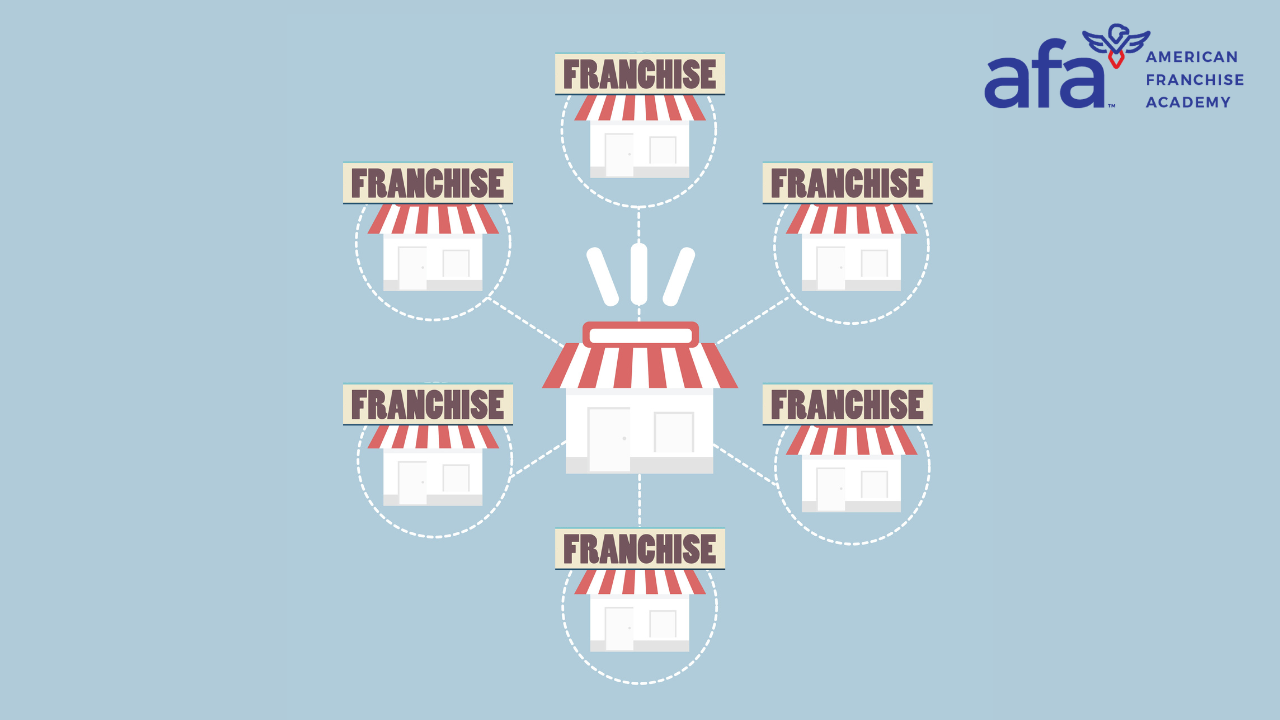What is a Franchise?

Even though the franchise model has been around for over 150 years, there's still a lot of confusion about what is a franchise and how to accurately explain how this business model works.
In this blog post, we’ll go over what is a franchise, a review of the history of this model, and what they offer to entrepreneurs and aspiring business owners.
Whether you’ve been around the franchise model for a significant amount of time, or you are new in the industry and want to learn more, this information will help you better understand the benefits of franchising, make the most of your franchise investment, and run a successful franchise unit or multi-unit enterprise.
The history of franchising
Pre-1800
To talk about the history of franchising, we have to go back to the 1800s. That's right! Back then, kings, queens, and local governments would give high church officials or high-class individuals the right to hold a market and do business in their territories in exchange for royalties.
These landlords could not maximize the lands they owned, so instead, they gave those rights to skillful people, who paid them revenue. This is where the royalties first came from.
1800-1900
In this century, back in England and Germany, a lot of beer brewers searched among the local pubs to provide them the exclusive rights to distribute their beers. That way, these taverns were turned into mini distributors of those beer companies, selling only their products, in exchange for favorable pricing credit.
This practice remains today: when you go to these countries, you can find small pubs that still represent one particular beer company and you would only find their beer there.
1851
Around 1851, the Industrial Revolution exploded. A small company you may have heard of, the Singer Company, was producing sewing machines back then and, because of the Industrial Revolution, they were able to produce an enormous amount of sewing machines.
But they had a really hard time distributing and maintaining those machines. So they came up with an “agents model” in which they provided the rights to sell and distribute the sewing machines, but they also had to maintain them. This allowed them to keep growing, have access to capital, produce the equipment, and increase their market share.
They didn't keep that model long because, as soon as they were able to capture those markets, they built their local units. But they were able to accomplish that explosive growth through those agents.
1880’s
Early in this decade, different U.S. cities granted monopoly franchises to utility companies. Depending on where you lived, you only had one choice for many, if not all, of your utilities because the government provided exclusive monopoly rights to those particular companies.
1898
General Motors started to grow through the franchise model. In exchange for businessmen building dealerships around the United States, they gave these agents or franchisees, discounted products.
Early 1900’s
Henry Ford followed through right behind GM when they had the explosion of the Model T car production. That was the beginning of those large organizations that still exist today as automotive franchises across the United States.
1950-1960
In 1950, less than 100 companies were following the franchise model. But by 1960, 900 brands were using this method as a way to explode. Think of brands like Holiday Inn, Dunkin Donuts, Mcdonald's, Burger King, 7-Eleven, etc.
1964-1969
There was an explosion of the model between these years, with 100,000 new franchised businesses across the United States. This was mostly due to President Eisenhower, who made a commitment and action plan toward the expansion of the interstate highway system.
This highway system allowed communication between cities, states, and communities, which helped people to travel and get to know brands from different markets. This also opened the distribution of the supply chain, a requirement to maintain a franchise model.
Today
These days, there are over 3,000 franchise brands in the United States and about 750,000 franchise units across the country.
They are 10% of U.S. businesses that have employees. And it is said that a new franchise unit opens every 6 minutes in this country. Another statistic: 97% of those franchises have existed or opened in the last 55 years!
The 4 steps of a franchise
As you can see, this model has been a way in which a company founder has been able to expand their business by offering their brand to individuals who are willing to invest in the units, or in the distribution of their product, in exchange for royalties.
Start. The average franchise usually begins with an exited entrepreneur that created a brand and a product they were passionate about, along with a service process on how to sell that product and a location to attend to customers.
Success. This independent business owner opens the first location, gets to the break-even point at some point in time, and eventually starts to make a profit based on the increased volume and the proper management of this business.
Growth. Because of the excitement, they decide to open a second unit, maybe even a third or a fourth one. As they copy or duplicate the original product, service process, image, and management of that business, success keeps coming.
Franchise. Continuous growth requires a lot of capital investment and the franchise model allows you to keep growing by having other people invest in building new locations and distributing the product and service process that the founding company created, in exchange for royalties or a fee.
That way, the owner can still have that increased revenue and maximize their proven brand through the investment of others, just as the sewing machine company, the car dealerships, and those brewers grew.
What do franchises offer?
What are you acquiring when you invest in a franchise? In exchange for royalty-free and other fees, you obtain the right to duplicate that successful product, service, prices, and image location that has proven that people are willing to pay money in exchange for that product or service.
- What franchisors -the founder that gives the rights to a franchise- offer is the product they created, the service procedures they defined as successful, and the image of that location.
What they don’t offer, which is probably just as important as what they offer, is people management, financial management, or administrative management. Basically, they're not offering the management of the business.
This is why it is so critical that future or current franchisees not only operate this brand with a high level of excellence but also have the business acumen, or knowledge, to manage the business and turn sales and revenue into a profit.
This is where a lot of that confusion happens because a lot of franchisees don't have clarity about what they buy when they invest in a franchise. And that becomes a challenge when it comes to operating the business profitably, which is why you would see a franchise unit closing.
Don’t miss: How to Avoid Being an Overwhelmed Business Owner
5 facts about franchising
I love the franchise model because they give entrepreneurs, inspiring and ambitious men and women, a chance to achieve their dream of business ownership by acquiring the rights to duplicate a proven brand. But there are some facts about this model:
- When you acquire the rights for a franchise brand, you are acquiring only a part of the business. No franchise owner will ever promise a profit because they have no control over that. You as a business owner, decide how you're going to manage your business.
- A franchise allows you to duplicate a brand that will bring you revenue, but it will be up to you to capture that revenue, continue to increase year over year, and then manage the operations in such a way that you will make a profit.
- One franchise unit is, on average, a job. Why? Because operating a single unit won’t make you rich but the average franchise revenue is between $600,000 and $750,000. Even if you get 10% of that as profit, that's $75,000 a year. That's a job.
- If you want to have not just financial freedom you have to grow into multi-unit to own multiple units because, as you open more units, you are also exponentially increasing your profit and therefore your income. Let's say one unit gives you a $75,000 profit. A second one gives you another $75,000, so you automatically doubled your income.
- Just because you are acquiring the rights for a franchise, it does not mean that you will own it forever. A franchise is a limited agreement between the franchisor and you for having the use of a brand, normally around 10 years. But they can decide not to renew with you or cancel the contract if you don't follow the same procedures.
I hope this gives you a better perspective on what the franchises are. To learn more about franchising, subscribe to our YouTube Channel and listen to our Franchise Success Formula podcast on Spotify.
Where we can give you the knowledge, tools, and resources you need to increase your understanding of the management side of the business, the one that the franchisor does not provide. Reach out to us so we can help you achieve your American dream of business ownership through franchising.
Reflections:
- Are you aware of what franchises actually offer?
- Is your franchisor giving you the tools, resources, and training you need to duplicate the brand correctly?
- Do you have the management skills you need to succeed with a successful franchise brand?
- How deep is your knowledge and understanding of this business model?
WATCH THIS VBLOG on YouTube HERE.


